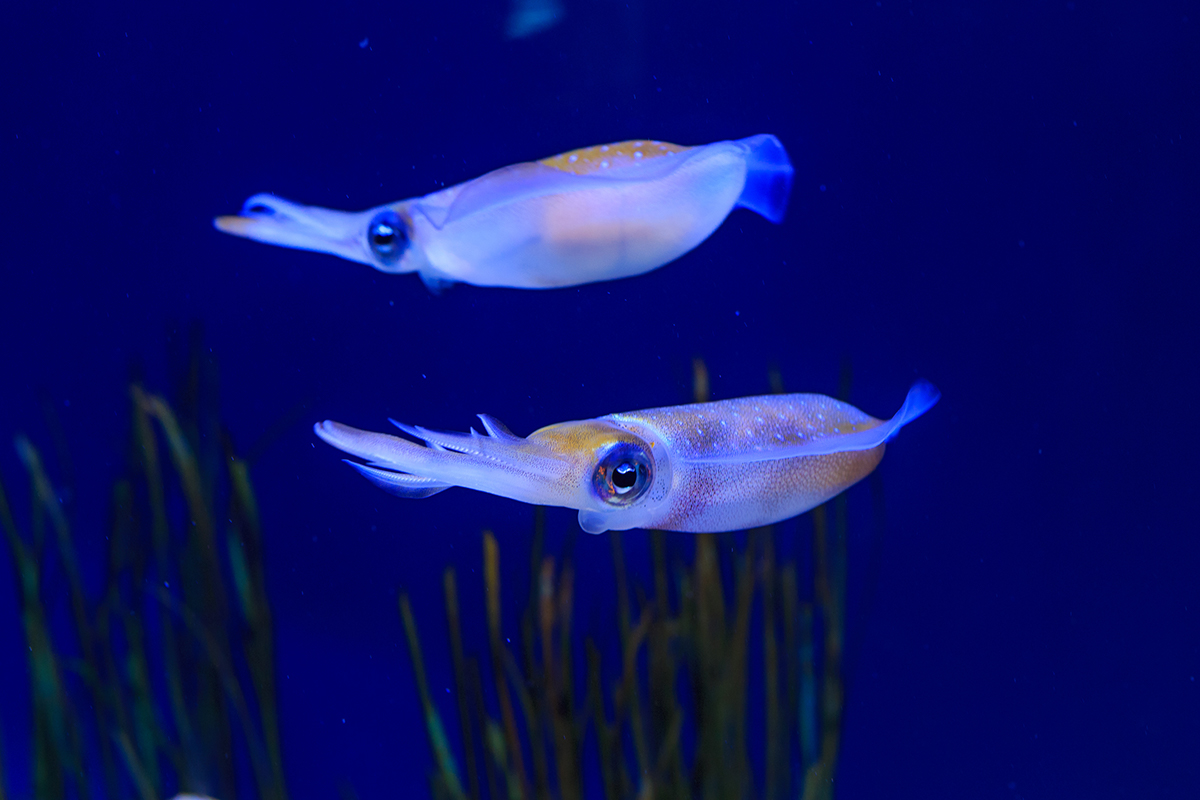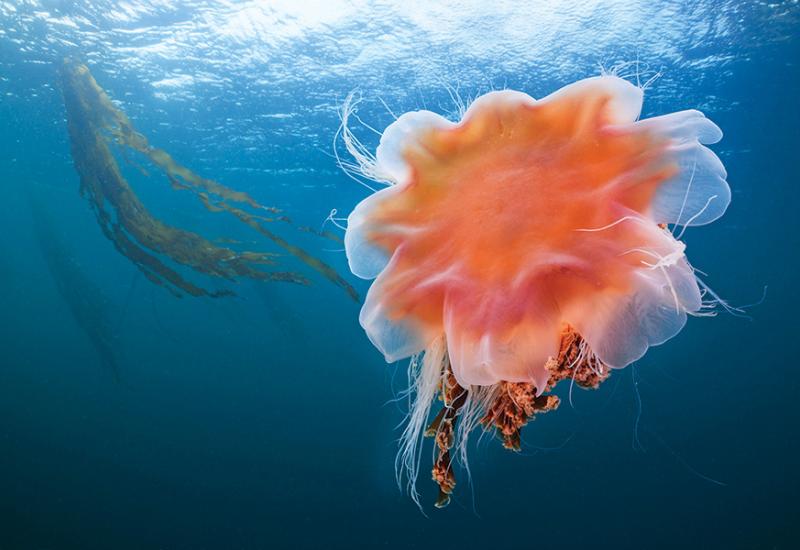What It’s Like to Take Your First Liveaboard Trip
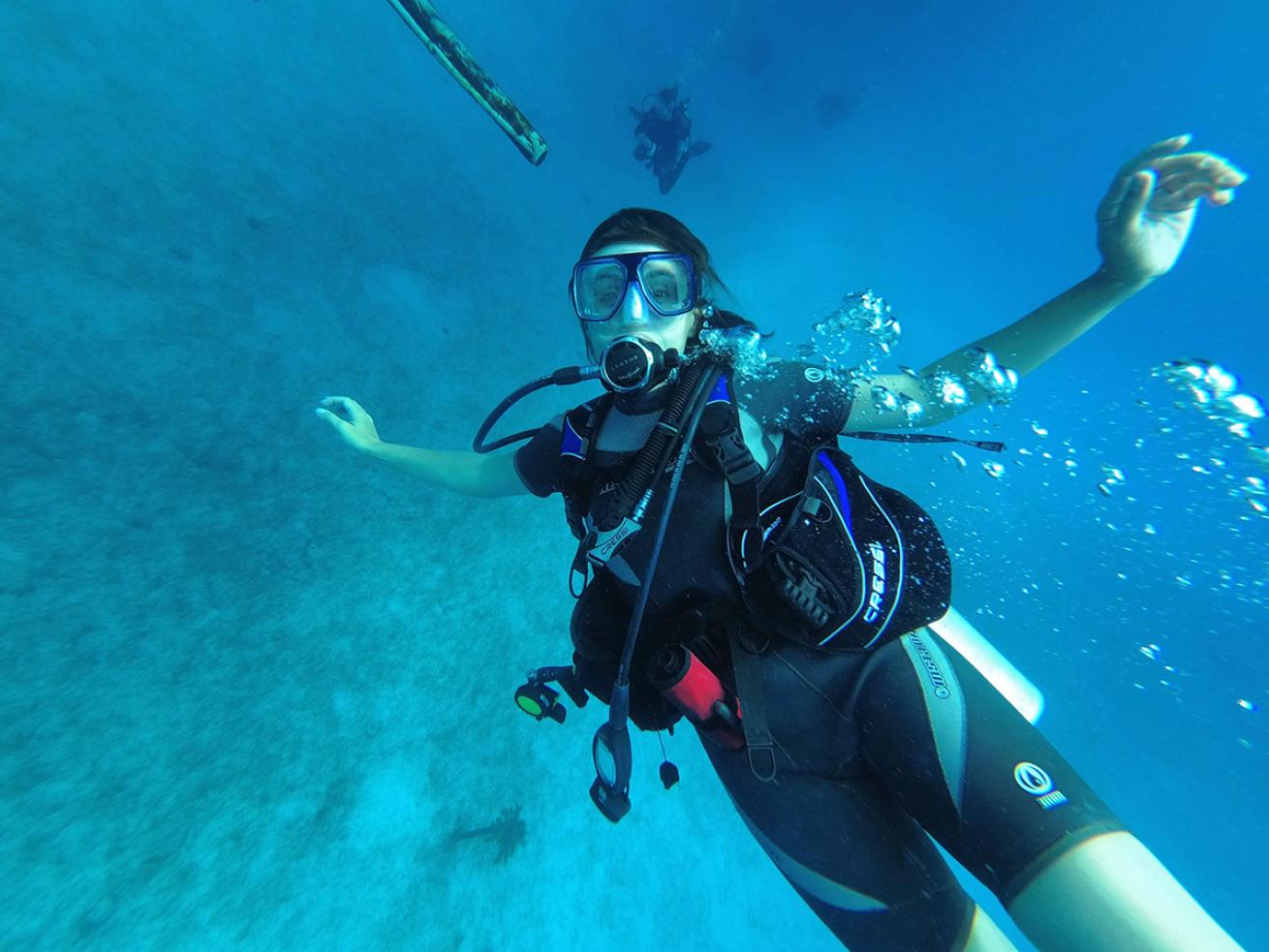
Dennis GautreauAlexandra Gillespie, Scuba Diving's digital editor, swims toward the liveaboard's safety stop bar.
“Everything we own is wet,” says Brooke Howe, an Alabamian rocket scientist, as she hangs swimsuits from the top deck of the boat to bake in the Belizean sun.
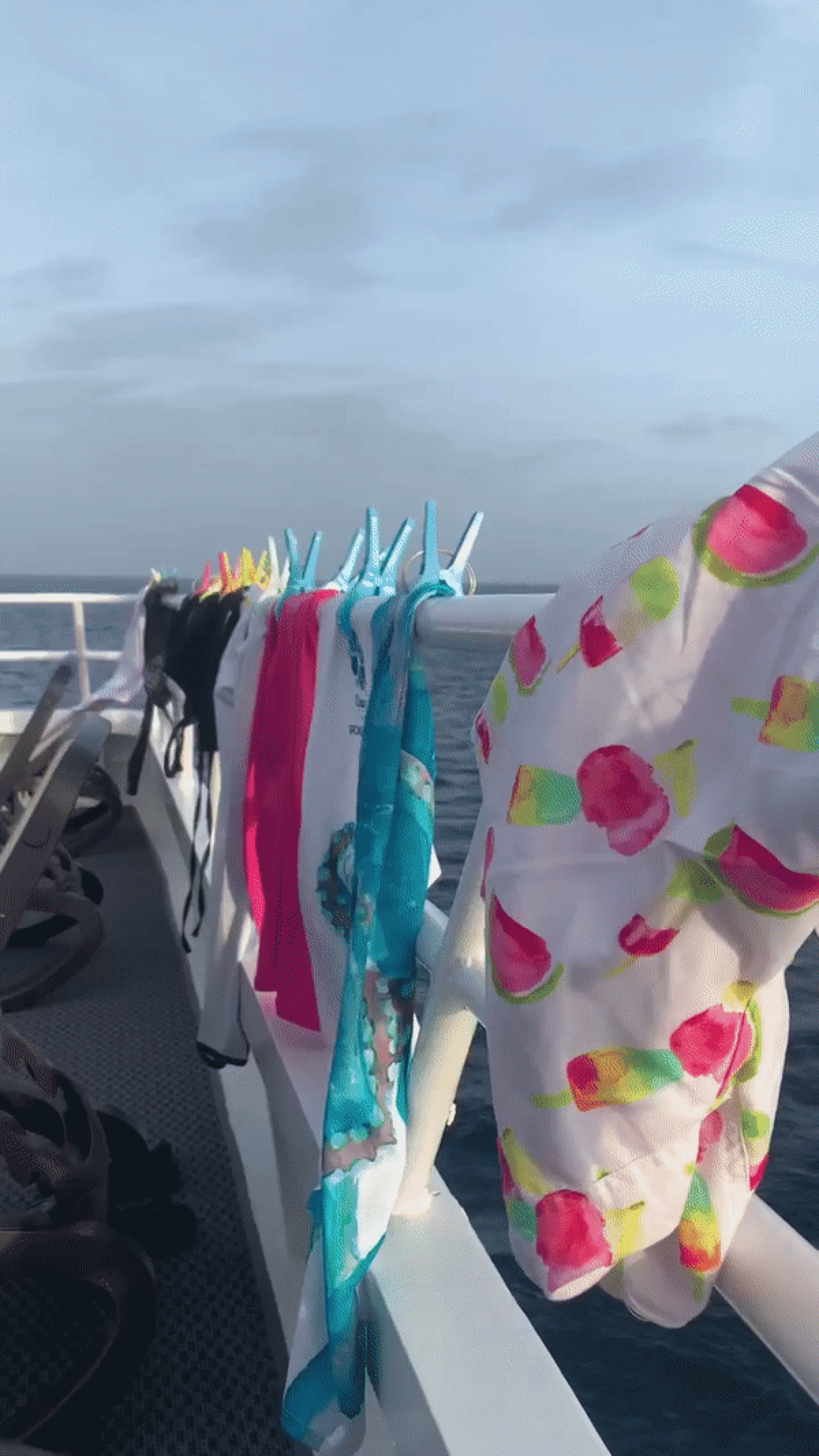
Alexandra GillespieSwimsuits dry on the rails of the Belize Aggressor IV.
I’ve laid myself out on a deck chair to dry as well. I’ve hardly been dry for more than a few minutes at a time since boarding Belize Aggressor IV a few days ago. By the time I’ve stopped dripping from one dive, it’s time to hop back in the water.
This intense dive schedule worried me before this trip, my first on a liveaboard. Before I go, part of me thinks a week of diving from an all-inclusive yacht in the Caribbean Sea sounds incredibly relaxing. I’ve spent the past year shore diving California’s sometimes choppy waters, so dropping directly into calm waters with somebody waiting to haul me out at the end sounds easy-peasy. Plus, when I learn the water in Belize will be in the 80s during my dive trip, I seriously consider not even packing a wetsuit. After two years of diving almost exclusively in cold water, 69 degrees feels like bathwater to me. Eighty-four degrees? I may as well jump in a hot tub wearing my full kit.
Despite all of this, I lacked confidence in my ability to do upward of five dives a day. It’s been more than a year since I did even two dives in a day, and I was in great shape from my recent wedding for that outing to Catalina’s Avalon Point. A pandemic bod has certainly set in since then. Am I fit enough for nearly 25 dives in less than a week? My first 50 have taken two years.
Adjusting my travel habits started well before takeoff with learning how to pack all of my dive gear, excluding a tank and weights, for the first time. It would have been simpler to rent all of my equipment onboard, but I decided for cost and comfort to bring my own. This required checking a bag for the first time in years, but provided the additional benefits of being able to bring enough reef-safe sunscreen and conditioner to deal with a week of intense sun and salt. At the advice of my colleagues, I tossed a few trash bags in my carryon to keep damp gear from seeping through my non-waterproofed, non-dive luggage at the end of the trip. (Now speaking from experience, I cannot recommend this highly enough. Also from experience: Pack ear drops, even if you’ve never needed them before. I never had, but borrowing some from my cabinmate five days in was a life-saver.)
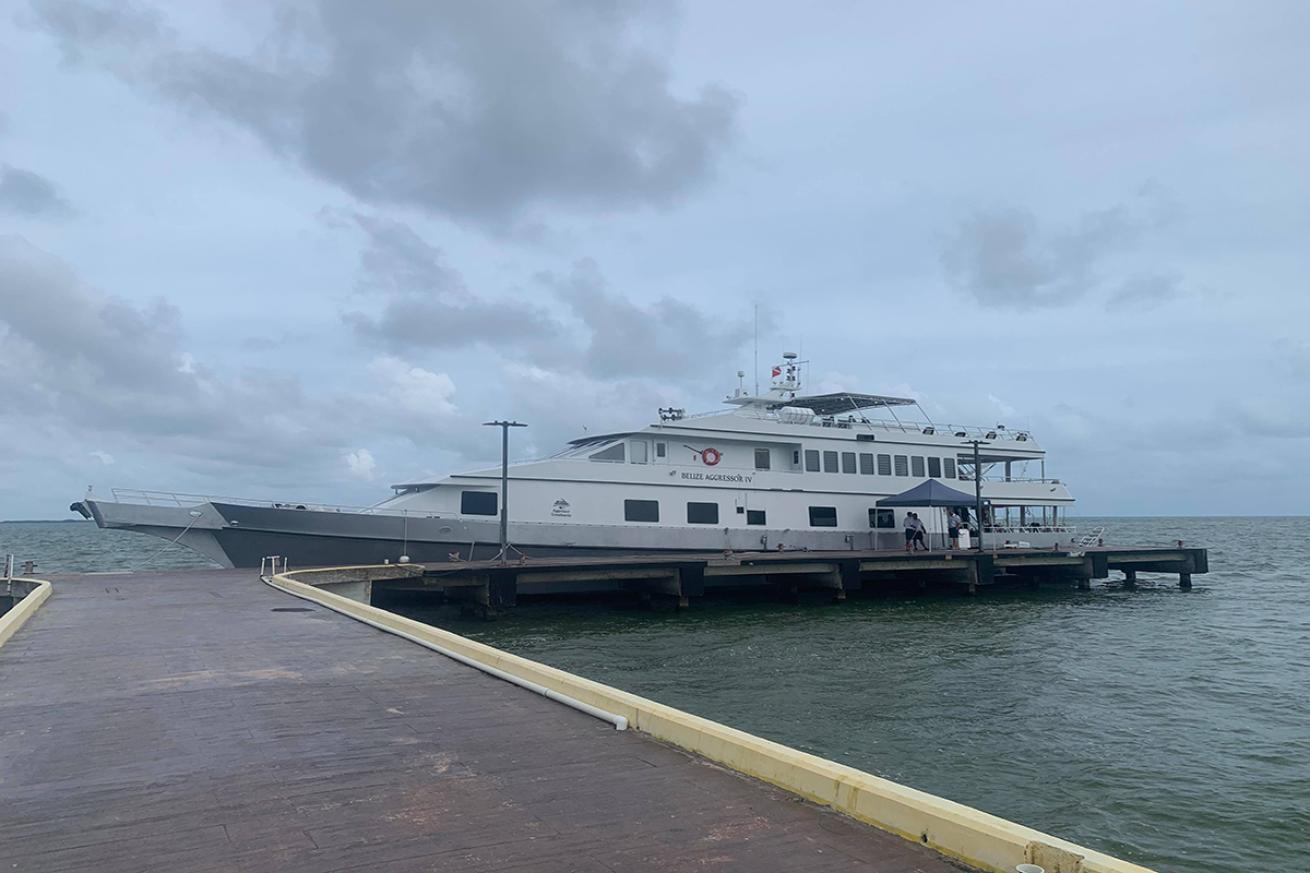
Alexandra GillespieThe Belize Aggressor IV sits at the dock of the Belize City Marina.
Once onboard, I realize fretting was wasted energy. First off, nobody is going to make you do all of the dives. It’s more like a buffet: You can eat all you want, but there’s nothing saying you have to eat every dish available. Everyone can dive to their heart’s content, whether they’re satisfied by 24 dives or 10.
To be sure, there are divers like my fellow guest Gary Grogan. This is his fifth liveaboard since getting certified in 2019, and he hasn’t missed a dive on a single trip. His logbook boasts 167 dives by the end of our week.
But, for every Gary, there are plenty of John Fishers. “I’m here to vacation first, dive second,” the Floridian businessman tells me at lunch. Ann Mayer is here from Louisiana for her husband Rusty, a retired Army dentist. Their dive trips are for him, ski trips for her, and she spends more than one dive laid out reading.
For my part, I slide into liveaboard life with ease. I haven’t had the opportunity to spend days at sea since studying abroad with Semester at Sea, and relish the opportunity to look for waves instead of Wi-Fi (of which there is blessedly none).
Hot black coffee is delivered to my door at 6:30 a.m. Steaming mug in hand, I stumble upstairs, wish the night watch good evening, and tuck into breakfast, a smorgasbord continental spread and prepared-to-order egg dishes. From there, it’s a blur of diving, eating and napping, all dictated by the crew’s bells—one to signify diving, another for meals. Just call me Pavlov’s diver.
I learn at the start of the week that Aggressor hands out Iron Diver awards to anyone who does all of the dives offered during a trip. There goes any chance I’m skipping a dive. My obsessive need to complete any evaluated task won’t allow it.

Alexandra GillespieScuba kits sit partially assembled offshore of Half Moon Caye.
Fortunately for the compulsive student in me that still has to ace everything, diving day in and out is the best assignment of all, and easier than it sounds. I set my gear up at the start of the week, strapping my weighted BCD to the provided tank. There it sits in a specially designed bench for the remainder of the trip, no need to entirely disassemble and reassemble my kit dozens of times. Check my air, slip on my mask and we’re ready to rumble! I don’t even have to put on my fins—the incredible crew learns whose fins are whose throughout the week and fastens them for me. My main job is to fall off the boat.
The calm Belizean waters make diving all day a breeze, and the incredible marine life gives me reason to come back hour after hour. The chattering reefs deliver a dizzying bustle throughout the day: sunny butterflyfish, undulating eels, purse-lipped trunkfish, sedate nurse sharks and hulking tarpon. Creatures I’d never heard of become some of my favorite encounters: scrawled filefish, a bulky lime fish covered in black-and-blue Morse code; squirrelfish, whose bulging eyes always make me chuckle; fairy bassets, with yellow tails flashing together below their purple heads like an underwater fire. Along the walls, reef sharks pace daily while eagle rays and turtles prompt sporadic tank clangs.
As wonderful as the day dives are, the night dives steal my heart. I love everything that comes out once the sun disappears. My dive buddy Jessica Ratcliffe, a Texas nurse, and I find at least one octopus every night. Squadrons of Caribbean reef squid make several iridescent appearances, inking me and snacking on fish. I follow eels searching for new homes and hover over crabs as they jostle for position on rocks.

Alexandra GillespieWine accompanies a chocolate brownie after Thursday's Thanksgiving dinner.
The only thing as constant as diving is the food. Seriously—there’s a sweet snack after the first dive, lunch following the second, a savory snack after the third, dinner after the fourth and a spiked hot chocolate following night dives. On Thursday, we sit down for a Thanksgiving dinner, an Aggressor tradition since their first liveaboard on the week of Thanksgiving in the 1980s. I nearly need to add weight to my BCD by the end of the week and vow to add hot chocolate packets and Jamaican rum cream to my home bar.
Friday night arrives, and with it the awards ceremony. About half of us earn the Iron Diver award for 24 dives in six days, and I’m one of them. We collect our medals and certificates with a smile and laugh, gathering for a commemorative picture, before it’s time to pack our bags. As we do, BCDs, swimsuits and sun shirts are still hanging all around. Everything is still wet. But that includes my appetite for liveaboard life. Far from being too much, 24 dives is just the start.

